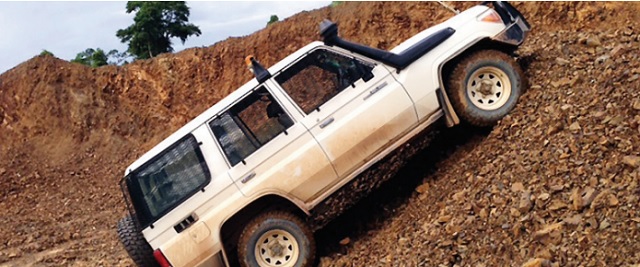
Kampala, Uganda | MOTORING GURU | I was caught up in a scary driving spot recently – going up a very, very steep hill in heavy stop and go traffic. Fortunately, my car and I can handle this situation perfectly. Not so the taxi ahead of me!
It was a hard lesson on why stopping up a very steep hill is called the “hanging position”. It is one of the trickiest driving situations and it gets worse the sharper the incline.
Now, considering that the guy ahead of me was driving a taxi, I suspect he must be relatively skilled. So the problem probably was his car.
Car condition is critical in this kind of situation. The hanging position is one of the worst places to be in when your brakes are not in good condition. Same with the handbrake. Those two have been in tip-top shape if you are going to avoid either tumbling over backwards or bumping into the car behind you.
And I suspect the taxi was having brake trouble. If not, then the driver was possibly not familiar with this particular vehicle as part of the survival technique in the hanging position involves knowing your vehicle’s friction position.
Normally, if it is a vehicle you drive a lot, then it is important to test the brakes – on hills. If it is an unfamiliar vehicle you are driving uphill, then it is imperative that you test the brake and handbrake early. You do this by going up the incline a few meters, then stepping on the brake pedal. If the vehicle stays in same position without rolling backwards you are possibly safe. The point is; high up the incline, stopping in the hanging position will put much more pressure on the brake. Try the same test on the handbrake.
But if you are caught up a steep hill without safe brakes; your goose is possibly cooked. You can possibly make it if you are driving a manual car and have practiced a bit. This is a situation that requires very, very, sharp reflexes. Fortunately, it appears, the taxi driver ahead of me had them.
I could see that he was trying to use the clutch to prevent his car from going backwards. In some driving schools this is called balancing – which means maintain very carefully balanced pressure on the clutch and accelerator. With unpracticed feet, it can be quite dangerous as a simple mistake can cause the engine to go off and you find yourself tumbling backwards. Usually, however, it is the clutch that suffers. If you have been in this situation, you are possibly familiar with the distinct smell of a burning clutch. Replacement is costly and gets worse if the whole transmission system is affected.
Otherwise, if you have tested your brake and handbrake and are sure they can handle an incline of more than 10 degrees; then use the following tips to survive.
• Select lower gears – one and two and start going up with the traffic flow.
• When the traffic stops, engage the handbrake if you feel there is a danger of rolling backwards. Keep your foot on the brake pedal – in case, the handbrake fails!
• Keep the vehicle ahead of you at some distance and hope that the one behind you does the same.
• When the traffic starts, accelerate gently while releasing the handbrake gently.
• If driving a manual, when traffic starts, step on the clutch and engage gear one. Next, ensure that you do three things at once. (1) Gently release the clutch, (2) accelerate gently (3) release the handbrake. Wow! If you do this correctly, you will feel the vehicle straining to pick power but it soon starts driving uphill quite comfortably. If you do it wrongly, the engine stalls.
• When you feel the vehicle moving comfortably, release the handbrake completely but keep your hand near it. You might need to engage it quickly!
• Repeat procedure until hill is cleared.
Note: If your brakes are not good but the traffic is not heavy, then race up the incline quickly without stopping. Don’t attempt if traffic is heavy and there is a danger of not clearing incline without stopping. If in doubt, practice on some hill is a quiet area.
 The Independent Uganda: You get the Truth we Pay the Price
The Independent Uganda: You get the Truth we Pay the Price



